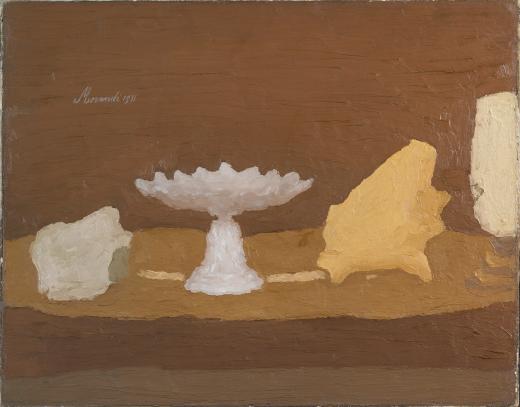MORANDI AND THE STILL-LIFE TRADITION
Morandi’s enthusiasm for Spanish Golden Age art coincided with the rediscovery in Italy of its principal masters. The critic and art historian Roberto Longhi, whom Morandi admired and later befriended, had already drawn attention in his writings to Diego Velázquez and Francisco de Zurbarán. In 1930, Longhi curated the exhibition Gli antichi pittori spagnoli della collezione Contini-Bonacossi at the Galleria Nazionale d’Arte Moderna in Rome. The Contini-Bonacossi Old Master collection, the largest in Italy, included a magnificent set of Spanish pictures by El Greco (Domenikos Theotokopoulos), Bartolomé Esteban Murillo, Velázquez, and Zurbarán. In his introduction to the catalogue, Longhi stressed the particular importance of the exhibition for contemporary artists, which explained the decision to hold it at Italy’s leading modern art museum, and he described Zurbarán as the “greatest constructor of forms with light, following Caravaggio and anticipating Cézanne,” declaring him a “proto-modern” artist.
Although he never mentioned any Spaniards among those who had influenced his work, Morandi’s interest in Spanish Golden Age painters was evidenced by a revealing episode centered on El Greco that took place in 1918 or 1919. The literary critic Giuseppe Raimondi recalled paying a visit to Morandi’s home, where the artist had a small book on El Greco open. Pointing to a reproduction of an Assumption or an Annunciation the size of a postage stamp, he indicated some flowers at the feet of the angels and the saints, saying: “No modern painter has painted flowers like these. Perhaps only Renoir.” As epitomes of the modern, Morandi found the Spanish masters to be kindred spirits.


